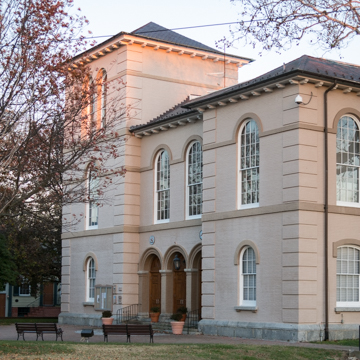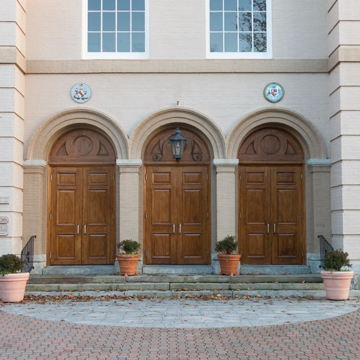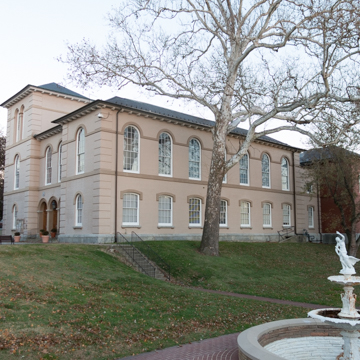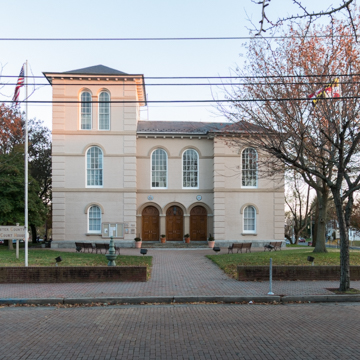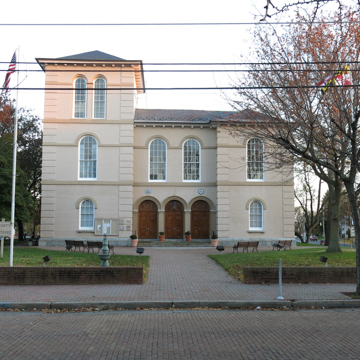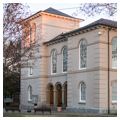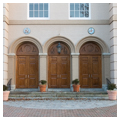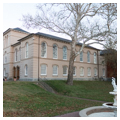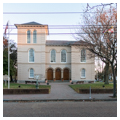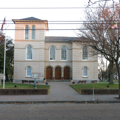Court was being held in the Dorchester County (founded 1669) seat of Cambridge as early as 1695. A brick courthouse built during the 1770s burned in 1852, prompting city officials to commission a replacement on the same site. Richard Upjohn, the prominent New York City architect, provided plans for an Italianate building with a square tower placed asymmetrically, round-arched openings, and wide eaves with bracketed gables. Upjohn was best known for his ecclesiastical architecture, as well as a variety of mid-nineteenth-century picturesque modes. By choosing the nationally known Upjohn, Dorchester County officials signaled the economic importance of Maryland’s Lower Eastern Shore in the antebellum era.
While Upjohn’s design is still apparent on the exterior, extensive interior renovations took place in the twentieth century, particularly during the 1930s. These changes, which favored a Colonial Revival approach, were overseen by Baltimore architect Stone. His alterations included additions to the southeast elevation of Upjohn’s original structure.


